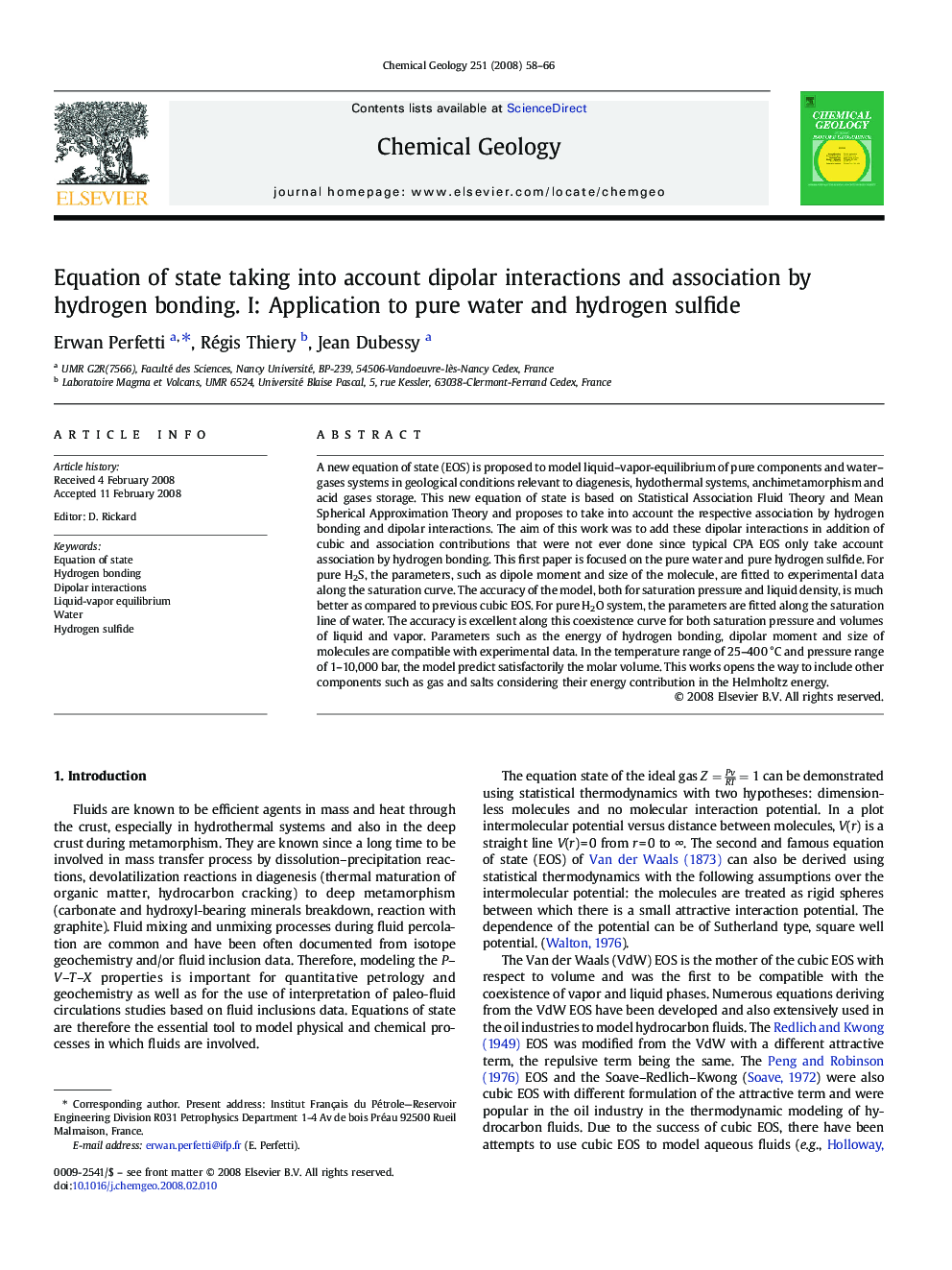| کد مقاله | کد نشریه | سال انتشار | مقاله انگلیسی | نسخه تمام متن |
|---|---|---|---|---|
| 4700694 | 1637729 | 2008 | 9 صفحه PDF | دانلود رایگان |

A new equation of state (EOS) is proposed to model liquid–vapor-equilibrium of pure components and water–gases systems in geological conditions relevant to diagenesis, hydothermal systems, anchimetamorphism and acid gases storage. This new equation of state is based on Statistical Association Fluid Theory and Mean Spherical Approximation Theory and proposes to take into account the respective association by hydrogen bonding and dipolar interactions. The aim of this work was to add these dipolar interactions in addition of cubic and association contributions that were not ever done since typical CPA EOS only take account association by hydrogen bonding. This first paper is focused on the pure water and pure hydrogen sulfide. For pure H2S, the parameters, such as dipole moment and size of the molecule, are fitted to experimental data along the saturation curve. The accuracy of the model, both for saturation pressure and liquid density, is much better as compared to previous cubic EOS. For pure H2O system, the parameters are fitted along the saturation line of water. The accuracy is excellent along this coexistence curve for both saturation pressure and volumes of liquid and vapor. Parameters such as the energy of hydrogen bonding, dipolar moment and size of molecules are compatible with experimental data. In the temperature range of 25–400 °C and pressure range of 1–10,000 bar, the model predict satisfactorily the molar volume. This works opens the way to include other components such as gas and salts considering their energy contribution in the Helmholtz energy.
Journal: Chemical Geology - Volume 251, Issues 1–4, 1 June 2008, Pages 58–66